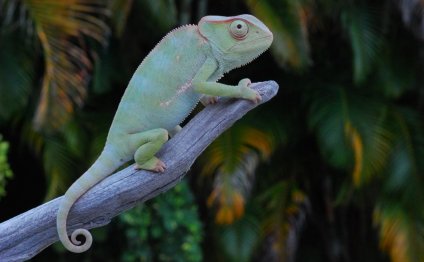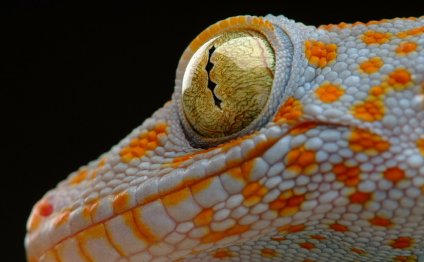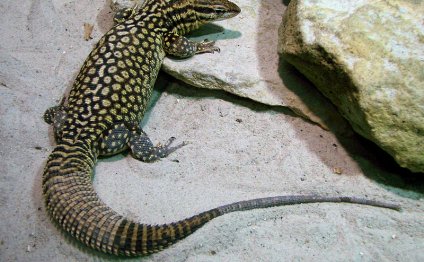
Best pet chameleon Species
 Greg Burke/Digital Vision/Getty Images
Greg Burke/Digital Vision/Getty Images
Updated .
Chameleons are amazing creatures but sometimes are not the best choice as pets.They are not for the beginner as their care requirements are quite specific and they are easily stressed. They do not like to be handled so pass this reptile by at the pet store or reptile expo if you want to be able to handle your reptile.
Color Changing
True chameleons (also referred to as old world chameleons) are most well known for their ability to change color.
Young chameleons are usually a dull gray/brown color and can change shades a bit but at around 5 months of age the adult color and the ability to change colors develops and a range of colors including green, blue green, turquoise and black can be seen. Changing colors provides camouflage, temperature regulation and a means of communicating with other chameleons.
Colors change in response to excitement, stress, temperature, lighting conditions, the presence of another chameleon, and other influences. Generally, a dark brown to black chameleon is stressed, with the brighter colors reflecting a happier mood. Also, different colors can be seen due to color mutations and other color phases. Recent research has shown that chameleons are actually stretching the chromatophores in their skin to make these color changes.
Chameleon Tongues
Another feature that makes chameleons unique is their tongue which is used to catch prey. The tongue can be up to 1.5 times the length of the body allowing chameleons to effectively catch insects from a distance. They primarily eat insects with this tongue but some eat vegetation and small invertebrates.
Chameleon Toes, Tails and Eyes
Chameleons live in trees and their feet have three toes pointing one way and two the other which gives them a good grip. Many species also have a prehensile tail meaning it is also used to grip branches. They have globular eyes which rotate like turrets and move independently allowing them to scan a wide radius to hunt for food and look out for predators.
Choosing a Chameleon
When selecting a chameleon, it is without question best to find a captive bred one. Wild caught specimens are usually extremely stressed, carry a heavy parasite load, and have difficulty acclimating to captive conditions. Chameleons are not the hardiest nor easiest reptile to keep and starting with a stressed pet will only make matters worse. In addition, the capture and shipping of chameleons (which fortunately is being more tightly regulated) results in the death of many animals due to stress, dehydration or starvation - many more die in transit than make it to the pet store (the same can be said for many exotic pet species). Observe the chameleon - it should be bright and active, able to change colors, and have a well fleshed body. Some experienced chameleon keepers recommend a male, especially for the beginner, as their nutritional needs are somewhat simpler and they seem a little more hardy. Being territorial and solitary animals, chameleons should be kept singly. In any case, two males should never be kept together as they will be very aggressive with each other.
Chameleon Breeds
There are several species kept as pets, the most common being the veiled, Jackson's, and panther chameleons. Veiled chameleons are large (up to 2 feet long) and need a suitably large enclosure, but are fairly hardy. Jackson's chameleons are smaller (need less space), and the males look like little triceratops with three horns on the head, but they are not as hardy. Panther chameleons are also quite large (males are much larger than females), and exhibit some striking colors.
RELATED VIDEO



Share this Post
Related posts
Colorful lizard
A very large species of chameleon that is endemic to forests in eastern and northern Madagascar. They reach up to 68 cm (27…
Read MoreBest pet monitor lizards
Monitors are opportunistic carnivores and insectivores meaning they eat whatever animals and insects are available. In the…
Read More











